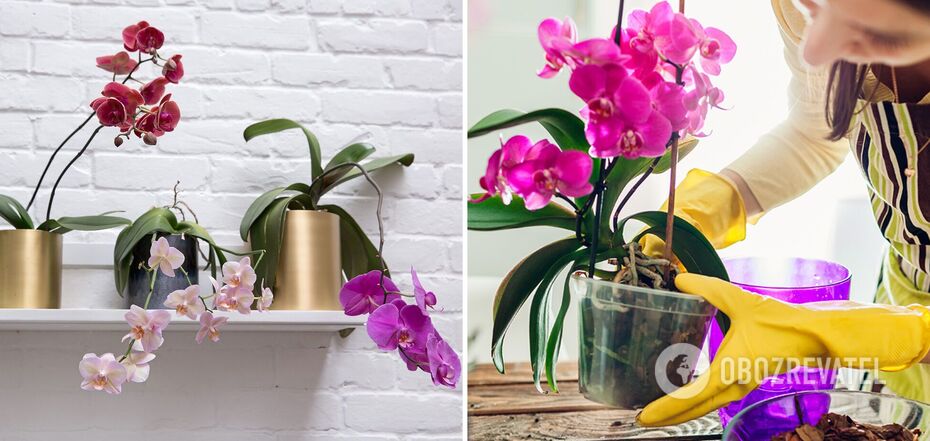Life
What prevents an orchid from blooming: why buds dry without blooming
A newly purchased indoor orchid can upset its owner by causing its flower stalks to dry up, buds to fall off, and it will stop blooming soon after moving to a new home. No wonder this flower is considered capricious - it is very sensitive to external conditions and reacts to them in a similar way. Therefore, it is important to know why the orchid sheds its buds and not to get upset too soon.
As OBOZREVATEL has learned, experienced orchid lovers advise not to give up on yourself as a gardener, but to try to understand what the mistake in growing a flower is. And, of course, to correct it.
Age
An indoor orchid, unlike its relatives in nature, can stop blooming due to its age. In home cultivation, the life expectancy of a plant is 10-12 years, of which only 5-7 years it actively blooms. If your plant has been with you for a long time, it may stop blooming because of its age. But in this case, it will most likely not produce flowering shoots.
Lack of light
If your orchid is going to bloom in the autumn-winter period, which is not uncommon, it may be hampered by a lack of sunlight. In such cases, the plant tries to bloom, produces 1-2 flowers, and then stops the process. This is because it does not have enough light to have enough vitality for full flowering.
This problem is solved by purchasing a phytolamp. The device will give the orchid the light of the spectrum it needs and will allow you to extend daylight hours to the required 10-12 hours.
Watering mistakes
Orchids are very sensitive to deviations from the normal watering rate. In nature, they grow in areas of frequent tropical rainfall and receive moisture regularly. At the same time, the plant tolerates a delay in watering much better than stagnant water in the roots. In this case, it begins to rot, the flower's nutrition mechanism is disrupted, it starts to get sick, and this prevents it from blooming fully. However, a prolonged drought also results in a lack of nutrients for the orchid, which has the same result - it does not form flowers.
That is why you should read the detailed rules for watering the plant, purchase a suitable pot, and adjust this process. The orchid is quite resilient, so it should soon delight you with flowers.
Low air humidity
Due to the fact that orchids do not grow in the ground, but rely on trees, they have learnt to get some of their nutrition and moisture directly from the air. And they begin to bloom during the rainy season, when they know they will have enough water to do so. Therefore, too dry an atmosphere is a significant obstacle for orchids to bloom. And in winter, when the heating is on, it is quite difficult to provide the plants with the required 60-70% humidity. Therefore, the flower goes into dormancy and does not bloom.
If you still want to admire the flowers, buy a humidifier for the orchid. Or make one yourself. There are many ways to do this.
Temperature fluctuations
Orchids need daily temperature fluctuations to bloom. But they should be comfortable - within 5-7 degrees. Slightly warmer during the day and cooler at night, without going beyond the optimal 20-27 degrees. If the temperature gets higher or lower, it causes even a plant that is ready to flower to shed its buds.
Therefore, make sure that in the summer the flower pot does not stand in the sun - it will be too hot there, and do not expose it to drafts - this will freeze the orchid. To do this, remove the flower from the window when you ventilate during the cold season and do not direct the air conditioner at it when it is warm.
There is also a tip for those who are just planning to buy an orchid for home. You will be buying a flowering plant, so it may freeze during transport home and upset you by shedding buds. Make sure that this does not happen to the plant. Or postpone the purchase.
Excessive fertiliser
In nature, an orchid is nourished not only from the substrate, so you shouldn't try too hard to make it a rich soil. - This will not give good results. A flower will tolerate a lack of fertiliser much better than an excess.
Therefore, if you have purchased orchid fertiliser, feel free to use it. Just dilute it more strongly than the instructions. First of all, this applies to nitrogen fertilisation. It can harm the plant the most.
Earlier, OBOZREVATEL talked about ways to revive a dry orchid.
Only verified information is available in our Obozrevatel Telegram channel and Viber. Do not fall for fakes!



























